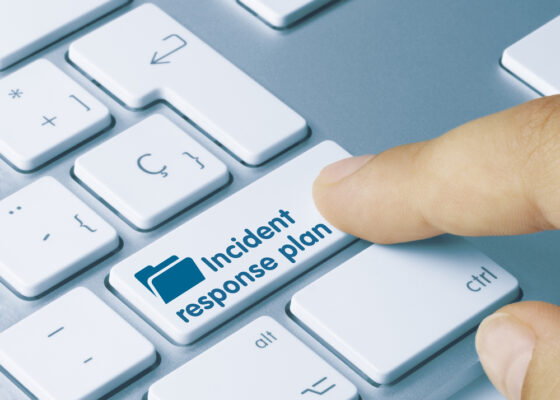Efficient incident management is critical for risk practitioners in the unpredictable area of risk management. Identifying, assessing, responding to, and resolving incidents quickly is vital in mitigating potential risks and reducing their impact.
Risk practitioners can ensure their organizations operate smoothly by implementing a well-structured incident management process. This will help them navigate the complexities of incident handling effectively.
Importance of an efficient incident management process
The importance of an efficient incident management process cannot be overstated. It serves as the backbone of an organization’s risk management strategy, enabling practitioners to address and mitigate incidents that may arise promptly.
Through a systematic approach, incidents are managed in a timely manner, minimizing their potential impact on business operations, financial stability, and reputation.
An efficient incident management process provides several key benefits for professional risk practitioners:
- Proactive Risk Mitigation: With an effective incident management process, risk practitioners can proactively identify and address potential risks before they escalate into major incidents. By promptly intervening, they can prevent minor issues from snowballing into costly and damaging incidents.
- Enhanced Operational Resilience: An efficient incident management process allows organizations to maintain operational resilience, even in unexpected events. By swiftly responding to incidents, risk practitioners can minimize disruptions, restore normalcy, and ensure business continuity.
- Regulatory Compliance: Compliance with regulations and industry standards is a top priority for professional risk practitioners. An efficient incident management process helps ensure that incidents are properly documented, reported, and managed in accordance with legal and regulatory requirements, safeguarding the organization from potential penalties and reputational damage.
- Continuous Improvement: A well-structured incident management process facilitates continuous improvement and learning. Through regular incident reviews and analysis, risk practitioners can identify patterns, root causes, and areas for improvement. This valuable insight allows organizations to refine their risk management strategies, enhance their incident response capabilities, and prevent similar incidents in the future.
The following sections will delve deeper into the incident management process, exploring its key components, steps, best practices, and common challenges.
Professional risk practitioners can confidently strengthen their incident management skills and navigate the complex risk landscape by completely understanding this crucial process.

Understanding the Incident Management Process
Definition and Purpose
In risk management, an efficient incident management process is paramount. It serves as a structured approach to identify, respond to, and resolve incidents that may pose potential risks to an organization.
In this context, an incident is any event or occurrence that deviates from the expected or desired outcomes, leading to actual or potential harm.
The purpose of the incident management process is twofold. First and foremost, it aims to minimize the impact of incidents on an organization’s operations, reputation, and bottom line.
To minimize the impact of incidents, professionals should promptly address and resolve them. This will ensure a quick recovery and a return to normalcy.
Second, it fosters a proactive risk management culture, enabling professionals to learn from past incidents and continuously improve their practices.
Key Components
An effective incident management process comprises several key components that work harmoniously to achieve its objectives. These components include:
1. Incident Identification: The first step is identifying incidents as early as possible.
This may involve various methods such as monitoring systems, analyzing data, conducting audits, or receiving reports from employees or customers. Timely identification allows for prompt action, minimizing the impact of incidents.
2. Incident Reporting: Once an incident is identified, reporting it accurately and promptly is essential. Incident reports are a crucial communication tool, providing detailed information about the incident to the relevant stakeholders.
Clear, concise, and timely reporting ensures that the incident management team has the information to initiate the appropriate response.
3. Incident Assessment: After an incident is reported, it undergoes a comprehensive assessment to determine its severity, potential impact, and underlying causes.
This assessment involves gathering additional information, analyzing the incident’s characteristics, and evaluating its organisational implications. A thorough assessment guides subsequent steps in the incident management process.
4. Incident Response: The incident response phase involves developing and executing a plan to address the incident effectively. This includes mobilizing the incident management team, coordinating resources, and implementing predefined response strategies.
The incident management team takes charge, working collaboratively to mitigate the incident’s effects and restore normal operations.
5. Incident Resolution: Once the incident has been addressed, efforts focus on resolving the underlying issues and restoring stability. This may involve implementing corrective actions, reviewing and revising processes, or making necessary changes to prevent similar incidents in the future.
Resolution activities aim to minimize the risk of recurrence and strengthen the organization’s overall resilience.
6. Incident Review and Analysis: A critical component of the incident management process is reviewing and analysing incidents. Professionals thoroughly examine the root causes, identify any systemic weaknesses, and extract valuable lessons.
This information feeds into continuous improvement efforts, ensuring the organization learns from past incidents and enhances its risk management practices.
Roles and Responsibilities
A successful incident management process requires a clear delineation of roles and responsibilities. Several key roles contribute to the effective functioning of the process:
1. Incident Manager: The incident manager oversees the incident management process. They coordinate and direct the incident management team, ensure timely response, and facilitate stakeholder communication.
The incident manager is the central point of contact and makes critical decisions to guide incident resolution.
2. Incident Management Team: The team comprises individuals with diverse expertise and responsibilities. This team collaborates closely to handle incidents promptly and efficiently.
Roles within the team may include incident coordinators, technical specialists, communication liaisons, and subject matter experts. Each member brings unique skills to address incidents and effectively support the incident manager.
3. Stakeholders are individuals or groups interested in or affected by the incident. They can include employees, customers, suppliers, regulatory bodies, and the general public.
Stakeholders are vital in incident reporting, providing valuable information and perspectives. They may also be involved in incident resolution, ensuring effective communication and a smooth recovery.
Professional risk practitioners can establish a strong framework for efficiently handling incidents by comprehending the incident management process’s definition, purpose, key components, and roles and responsibilities.
This knowledge is the foundation for implementing best practices and overcoming common challenges in incident management. In the following sections, we will delve deeper into the steps of the incident management process, explore best practices, and address the challenges faced by risk practitioners. Stay tuned!
Continue reading:
Steps in the Incident Management Process
Once an incident has been identified, a well-defined incident management process is crucial for professional risk practitioners to handle the situation effectively.
This process consists of several key steps designed to ensure a swift and efficient response, minimizing the impact of the incident on the organization.
Incident Identification
The first step in the incident management process is incident identification. This involves recognizing and acknowledging that an incident has occurred or has the potential to occur.
Prompt identification is essential to initiate the appropriate response, whether a cybersecurity breach, a natural disaster, or any other type of incident.
Risk practitioners must stay vigilant and employ various monitoring techniques to detect and promptly identify potential incidents.
Incident Reporting
Once an incident has been identified, reporting it promptly and accurately is crucial. This step involves notifying the appropriate parties, such as the incident management team or relevant stakeholders, about the incident.
Effective incident reporting ensures that the incident is escalated to the appropriate management level and that the necessary resources are allocated to address the situation.
Incident Assessment
After the incident has been reported, the next step is incident assessment. During this phase, risk practitioners gather necessary information and assess the severity and potential impact of the incident.
This involves conducting a thorough investigation, analyzing the available data, and evaluating the potential risks and vulnerabilities associated with the incident.
The goal of incident assessment is to comprehensively understand the incident to develop an appropriate response strategy.
Incident Response
Once the incident has been assessed, it is time for incident response. This step involves developing and implementing a plan to address and mitigate the incident.
The incident management team, equipped with incident management tools and a well-defined incident management system, executes the response strategy.
The response may involve various activities, such as containment, recovery, and restoration, depending on the nature of the incident. The primary objective of the incident response phase is to minimize the impact of the incident and restore normal operations as quickly as possible.
Incident Resolution
The focus shifts to incident resolution after effectively addressing and mitigating the incident. This step involves resolving the underlying causes of the incident, implementing corrective actions, and ensuring that similar incidents are less likely to occur in the future.
Incident resolution may require conducting a root cause analysis, updating policies and procedures, or enhancing security measures. It is essential to thoroughly document the steps during this phase to facilitate future incident review and analysis.
Incident Review and Analysis
The final step in the incident management process is incident review and analysis. This step involves conducting a comprehensive incident review, analyzing the response’s effectiveness, and identifying improvement areas.
Risk practitioners can identify trends, patterns, and lessons learned from the incident by conducting a thorough analysis.
This information can then enhance incident management workflows, update incident response plans, and improve the overall incident management process.
In conclusion, the incident management process consists of well-defined steps, starting from incident identification and culminating in incident review and analysis.
Professional risk practitioners must follow these steps diligently to respond effectively to incidents, minimize their impact, and continuously improve their incident management capabilities.
Risk practitioners must establish clear incident reporting channels, develop incident response plans, and regularly train their teams to ensure an efficient incident management process.
Best Practices for an Efficient Incident Management Process
To effectively handle incidents and mitigate risks, professional risk practitioners must employ best practices for an efficient incident management process.
Organizations can improve their incident management capabilities by setting up clear incident reporting channels, creating incident response plans, conducting regular training and drills, and being open to continuous improvement and learning.
This will enable them to respond quickly and effectively to any potential crisis.
1. Establish Clear Incident Reporting Channels
One of the fundamental pillars of an efficient incident management process is establishing clear incident reporting channels. These channels are the arteries through which information flows, enabling swift identification and reporting of incidents.
Organizations can ensure that incidents are promptly logged and assigned to the appropriate personnel for further action by implementing a centralized incident reporting system, such as an incident management system.
This streamlines the incident management workflow and facilitates efficient communication among the incident management team.
2. Develop Incident Response Plans
Another crucial aspect of efficient incident management is the development of comprehensive incident response plans. These plans outline the specific steps and actions needed during different incidents, ensuring a standardized and coordinated approach.
Organizations can minimize confusion and delays when incidents occur by proactively mapping out the incident response process, allowing for a swift and effective response.
Incident response plans should include clear guidelines on roles and responsibilities, communication protocols, escalation procedures, and any necessary resources or tools required.
3. Regular Training and Drills
Professional risk practitioners should conduct regular training and drills to maintain readiness and proficiency in incident management. These exercises simulate real-life scenarios and enable teams to practice response strategies in a controlled environment.
Practitioners can identify gaps or weaknesses in their incident management process by immersing themselves in simulated incidents. This helps them address any issues proactively.
Regular training and drills also help improve coordination and collaboration among team members, enhancing their ability to work together seamlessly during actual incidents.
4. Continuous Improvement and Learning
Lastly, an efficient incident management process requires a culture of continuous improvement and learning. After every incident, it is essential to conduct a thorough review and analysis to identify areas for improvement.
Organizations can reduce the risk of future incidents by analyzing the root causes and identifying any systemic issues. This allows them to implement corrective actions and preventive measures.
This iterative approach to incident management ensures that lessons learned are incorporated into future incident response plans, resulting in a more robust and effective framework.
In conclusion, professional risk practitioners must adopt best practices for an efficient incident management process to effectively mitigate risks and respond to incidents.
Organizations can improve their incident management capabilities and respond quickly and effectively to any potential crisis by creating clear channels for reporting incidents, devising response plans, conducting regular training and drills, and continually seeking to learn and improve.
Related articles:
- Incident Management Team
- Incident Management System
- Incident Management Tools
- Incident Management Workflow
- Major Incident Management
Common Challenges in Incident Management
While an efficient incident management process is crucial for professional risk practitioners, they often face several common challenges.
These challenges can hinder the effectiveness of incident management and compromise an organization’s overall security and stability. By understanding and addressing these challenges, risk practitioners can enhance their incident management capabilities and minimize the impact of incidents.

Lack of Communication and Coordination
One of the primary challenges in incident management is the lack of communication and coordination among the various stakeholders involved. Effective incident response requires seamless collaboration between IT, security, legal, and management teams.
However, if there is a breakdown in communication or a lack of coordination, it becomes difficult to promptly identify, assess, and respond to incidents. Miscommunication and siloed decision-making can result in delays, errors, and inadequate incident resolution.
To overcome this challenge, risk practitioners should prioritize establishing clear lines of communication and fostering a culture of collaboration within the organization.
Regular meetings, cross-functional training sessions, and integrated incident management tools can facilitate effective communication and coordination among the incident management team and relevant departments.
Inadequate Resources
Another significant challenge in incident management is the inadequacy of resources. Incidents can range in severity and complexity, requiring different levels of expertise, tools, and infrastructure to handle effectively.
Insufficient resources can impede the incident management process, leading to delays in incident response, inadequate analysis, and increased downtime.
To tackle this challenge, risk practitioners must thoroughly assess the resources required for incident management. This includes evaluating the staffing needs, ensuring access to appropriate incident management tools and technologies, and allocating budgetary resources accordingly.
Organizations can effectively mitigate the impact of incidents on their operations by investing in resources.
Insufficient Documentation and Reporting
Accurate documentation and reporting are essential components of incident management. However, many organizations struggle with inadequate documentation and reporting practices. Without comprehensive documentation, analyzing incidents, identifying patterns, and making informed decisions for future incident response becomes challenging.
Risk practitioners should emphasize the importance of detailed incident documentation and reporting to address this challenge. This includes capturing all relevant incident details, such as the incident timeline, actions taken, and lessons learned.
Implementing incident management systems or utilizing specialized incident management tools can streamline the documentation process and ensure the availability of accurate and accessible incident records for analysis and improvement.
Compliance and Regulatory Issues
Compliance with industry regulations and legal requirements is critical to incident management. However, organizations often face compliance and regulatory issues that can complicate the incident management process. Failure to adhere to relevant regulations can result in legal consequences, reputational damage, and financial penalties.
To overcome this challenge, risk practitioners should stay updated on the latest regulations and compliance requirements relevant to their industry.
Establishing strong partnerships with legal and compliance teams can ensure that incident management processes align with regulatory frameworks. Regular audits and assessments can help identify compliance gaps and enable proactive measures to address them.
In conclusion, professional risk practitioners encounter various challenges in incident management. These challenges, including the lack of communication and coordination, inadequate resources, insufficient documentation and reporting, and compliance and regulatory issues, can impede the effectiveness of the incident response.
Risk practitioners can improve their incident management capabilities and boost their organization’s security posture by identifying and addressing these challenges.

Conclusion
To sum up, having an effective incident management process is essential for risk professionals to efficiently handle and minimize potential risks and incidents.
Organizations can reduce the negative effects of incidents on their business continuity, reputation, and operations by implementing a thorough and organized incident management process.
Throughout this article, we have explored the importance of having an efficient incident management process. We have discussed the incident management process’s definition, purpose, and key components.
We have also outlined the various steps involved, from incident identification to incident resolution, and the importance of conducting incident review and analysis.
Additionally, we have highlighted some best practices that can enhance the efficiency of the incident management process.
Establishing clear incident reporting channels, developing incident response plans, conducting regular training and drills, and fostering a culture of continuous improvement and learning are all crucial aspects of an effective incident management process.
However, it is important to acknowledge that incident management can be challenging. Lack of communication and coordination, inadequate resources, insufficient documentation and reporting, and compliance and regulatory issues can all pose hurdles in effectively managing incidents.
Organizations can better navigate the incident management landscape by proactively addressing these challenges and implementing strategies to overcome them.
In conclusion, an efficient incident management process requires a holistic approach, where organizations focus on prevention, preparedness, response, and recovery.
Organizations can boost their incident management capabilities and secure their operations’ resilience by implementing the appropriate incident management tools, systems, and workflows and establishing a proficient incident management team.
For more information on incident management, please visit our blog post on the incident management team, incident management system, incident management tools, incident management workflow, and major incident management.
Remember, an efficient incident management process is not only a key component of risk management but also a critical element in safeguarding the success and stability of any organization.

Chris Ekai is a Risk Management expert with over 10 years of experience in the field. He has a Master’s(MSc) degree in Risk Management from University of Portsmouth and is a CPA and Finance professional. He currently works as a Content Manager at Risk Publishing, writing about Enterprise Risk Management, Business Continuity Management and Project Management.

